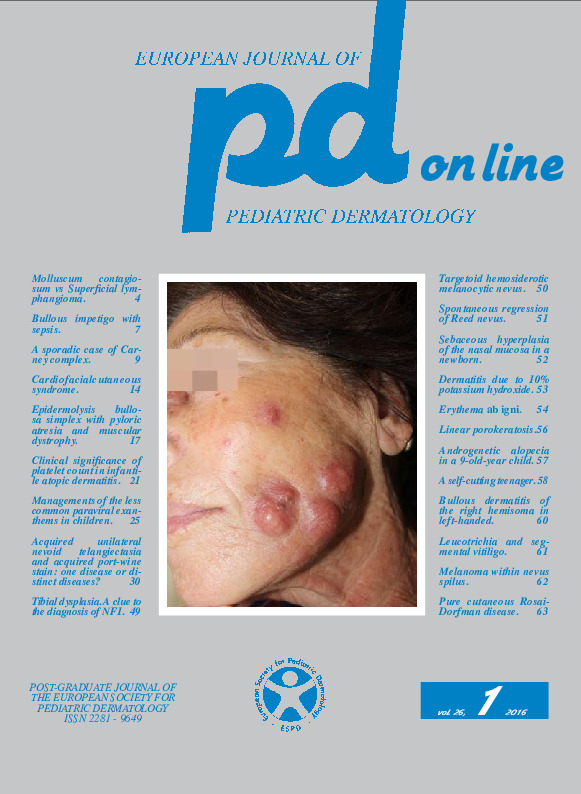Linear porokeratosis.
Downloads
DOI:
https://doi.org/10.26326/2281-9649.26.1.1199How to Cite
Garofalo L. 2016. Linear porokeratosis. Eur. J. Pediat. Dermatol. 26 (1): 56. 10.26326/2281-9649.26.1.1199.
pp. 56
Abstract
The basonuclin, a gene mapped in 15q25.1- position 26.1, has been identified in familial forms of porokeratosis. Linear porokeratosis, which is often distributed along the lines of Blaschko, is a form of nevic porokeratosis, probably related to a post-zygotic mutation resulting in mosaicism. The histological diagnosis of porokeratosis is not easy when not clinically suspected and when the pathologist is not invited to dissect the peripheral edge. It is difficult also because the cornoid lamella can be present in other skin diseases such as viral warts and some forms of ichthyosis. For this reason the clinical suspicion, based on the presence of morphologically rounded lesions with modest central atrophy and peripheral scaly, just raised ring, can receive a confirmation by dermoscopy examination showing a whitish peripheral ring with irregular vessels (1). The late onset of cancer on porokeratosis should advise clinical monitoring.Keywords
Porokeratosis, dermoscopy

